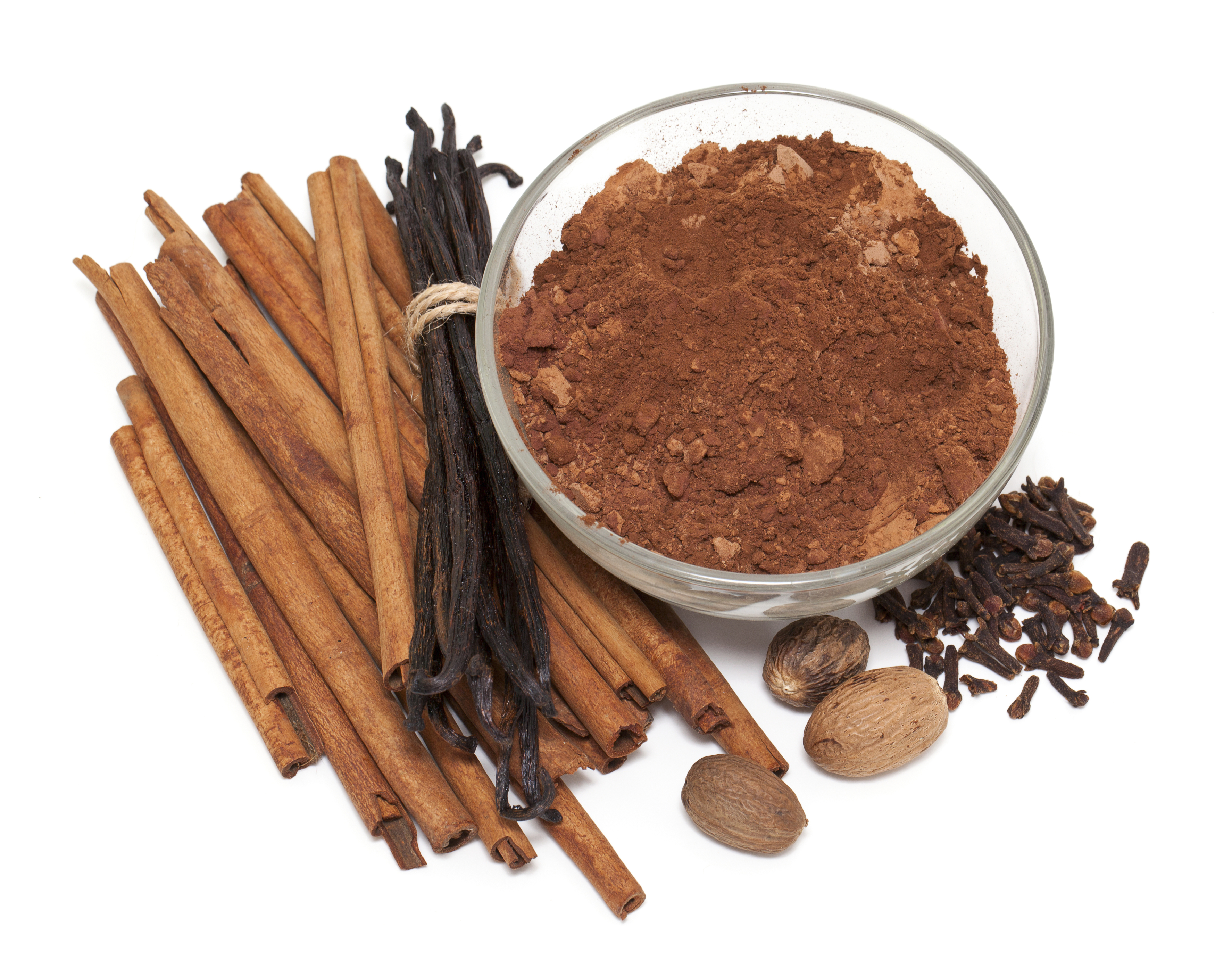Debbie J., MS, RD contributed this article –
Give yourself a gift this holiday season! Spice up the flavor of your favorite holiday dishes, and get some amazing health benefits. Who doesn’t want tastier food without extra calories especially at this time of year?
BONUS: A satisfied palate can lead to less food consumed (less calories), too!
The protection against cancer, diabetes and heart disease are big perks for a relatively small amount of spice consumed each day. Easily reap the benefits by using up to 1/8 teaspoon per serving at a time.
Spices mostly come from the seeds, berries, bark or roots of plants.
Black pepper goes hand in hand with salt as a seasoning, but is often overlooked as a spice in its own regard. It can improve digestion and may help burn fat at a faster rate. Its main component boosts metabolism. Try cracked pepper on chicken with grated citrus peel, minced garlic, or herbs.
Cayenne powder helps relieve aches and soreness and improves circulation. It may combat fat deposition in several ways and suppress appetite. Add a sprinkle to tuna, turkey, eggs and vegetables for a spicy kick.
The heat compounds in chili peppers (think chili, burgers and salsa) boost fat burning and promote good blood pressure. For a fun seasonal use, try adding a dash of ground ancho chile pepper or chipotle chile powder into your hot cocoa.
Ground cinnamon helps lower blood sugar and improve sensitivity to insulin. It has been shown to lower inflammation and to stimulate good circulation. Besides bakery items and oatmeal, try adding cinnamon to sweet potatoes, carrots, baked apples, French toast batter, yogurt, peanut butter and coffee.
Pie Spice = usually a combination of
cinnamon, nutmeg, cloves, and allspice
Apple Pie spice is mainly cinnamon.
Pumpkin Pie spice is heavy on nutmeg.
Add a teaspoon of pie spice to pancake batter or sprinkle lightly on fruit salad.
Cumin is helpful for immunity, energy production, digestion and blood sugar control. It has anti-stress benefits and may enhance memory. Use this as a stand-in for gram masala to flavor a cucumber, yogurt, and mint dip.
Turmeric is associated with pain relief and is a powerful antioxidant. One of its active compounds reduces fat tissue formation. Commonly used in curries, it can also be added sparingly to meats and salads. Sprinkle on egg salad or into water when cooking rice.
Herbs are derived from plant leaves and other plant parts.
These herbs also provide antiviral, antibacterial, antibiotic or antioxidant properties:
Basil – easily compliments cheese, sundried tomatoes and spice, such as in Italian dishes, potato wedges and orzo pasta.
Cardamom – unusual twist as part of spiced coffee, tropical fruit smoothies, rice pudding and fruit loaves.
Oregano – commonly used in Italian dishes, try adding to scrambled eggs, salad dressings, and black bean soup.
Marjoram – flavorful addition to stuffed mushrooms, beef or lamb stew, shepherd’s pie and bean salads.
Rosemary – crush or grind and add to vegetable omelets and mashed potatoes.
Sage – add to stuffing, infuse honey, or use in butter sauce for squash ravioli.
Thyme – sprinkle onto cooked vegetables, use as a salmon rub, or add to chicken soup.
Make your own seasoning blends without salt! The Academy of Nutrition and Dietetics recommends the combinations below. Just store in a tightly covered jar.
Mexican blend: ¼ Cup chili powder; 1 Tablespoon each of ground cumin and onion powder; 1 teaspoon each of oregano, garlic powder, and ground red pepper; and ½ teaspoon cinnamon.
Italian blend: 2 Tablespoons each dried basil and dried marjoram; 1 Tablespoon each of garlic powder and dried oregano; 2 teaspoons each of thyme, crushed dried rosemary and crushed red pepper.
Mixed herb blend: ¼ Cup dried parsley flakes; 2 Tablespoons dried tarragon; 1 Tablespoon each of dried oregano, dill weed and celery flakes.
Tinker with your favorite spices to add depth to a dish. It’s best to start with a pinch and add more rather than overdo it and completely mask the flavor of your food.
Debbie James is a registered dietitian. Any views or opinions presented in this article are solely those of the author and do not necessarily represent the opinions or recommendations of Fitness International, LLC.


Thanks for the update. It’s really very nice and useful ..Great informative post…